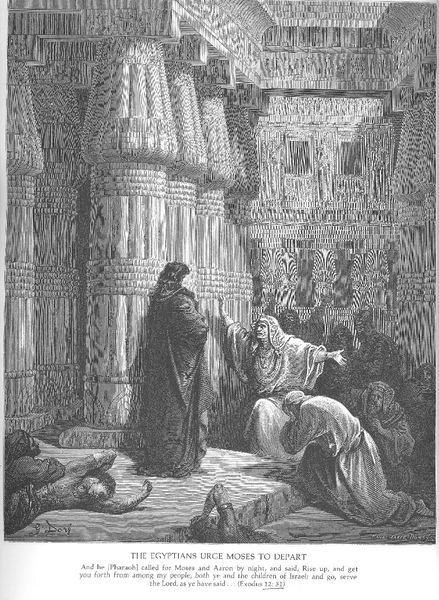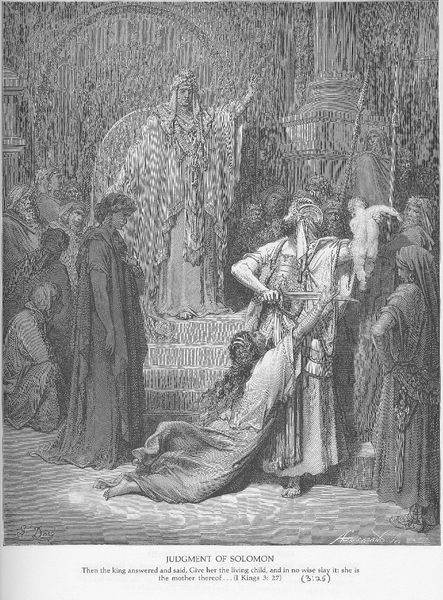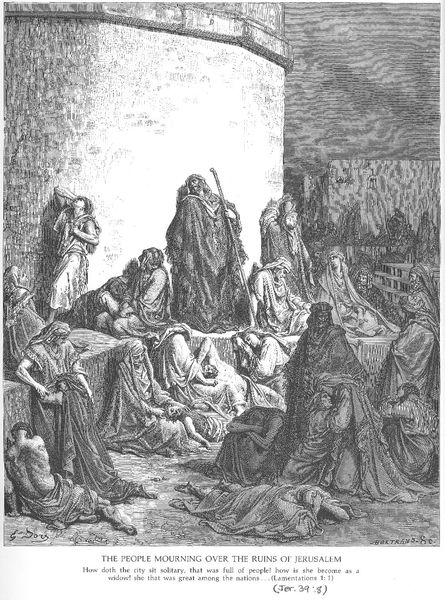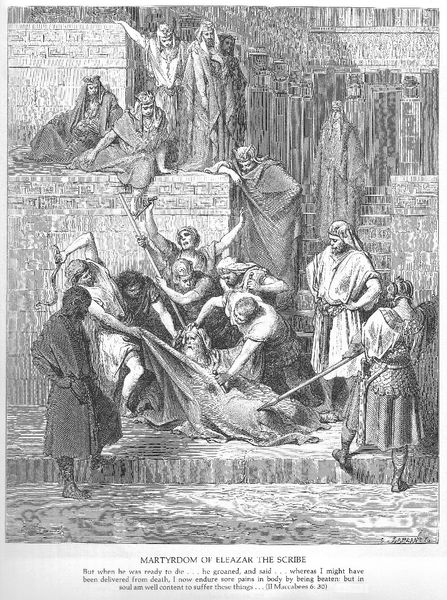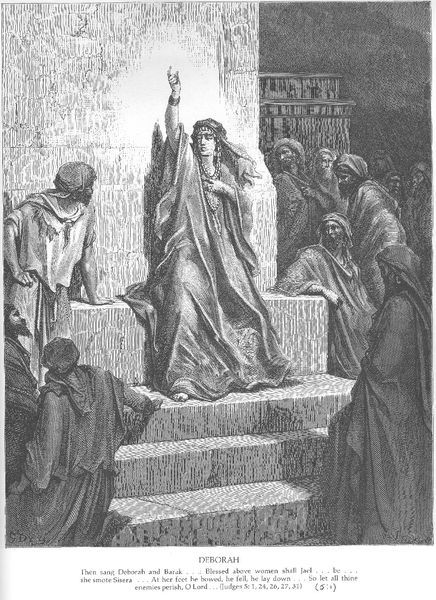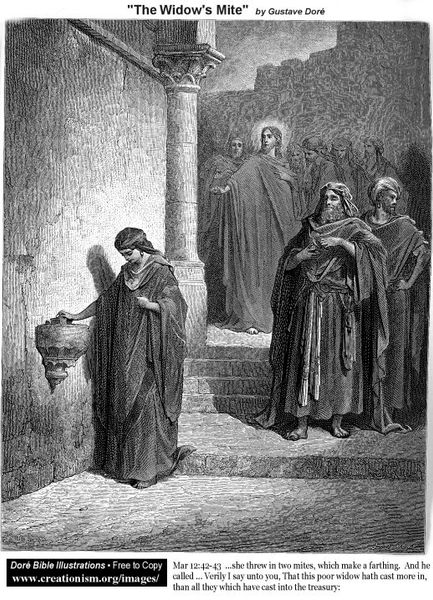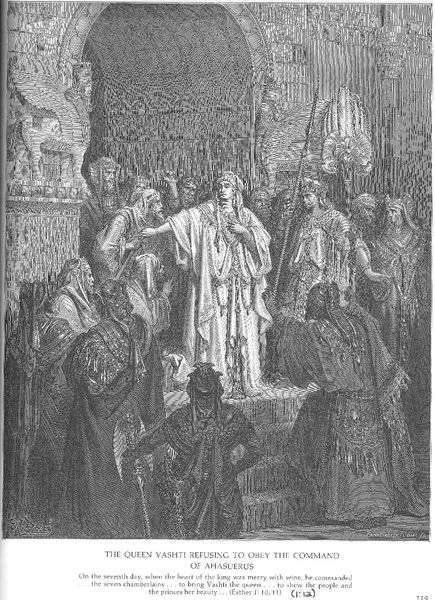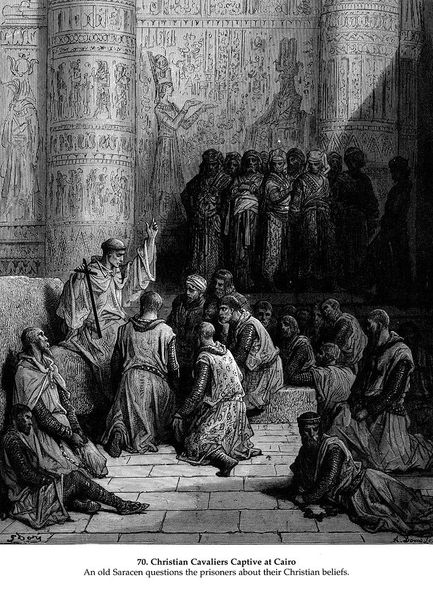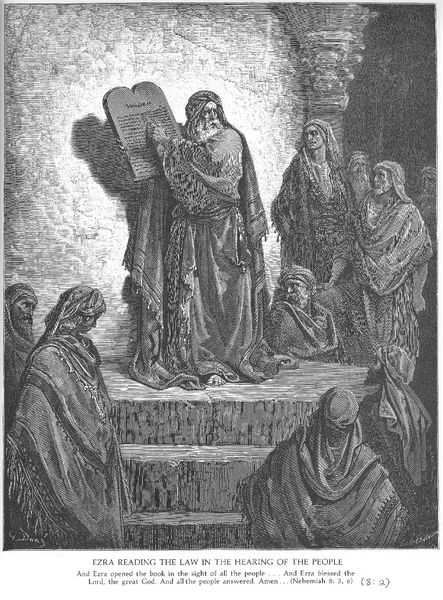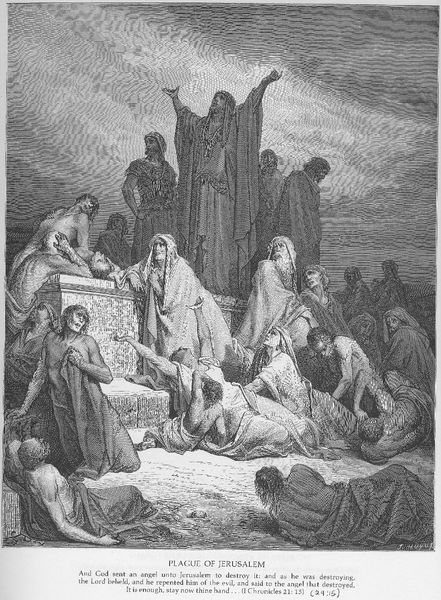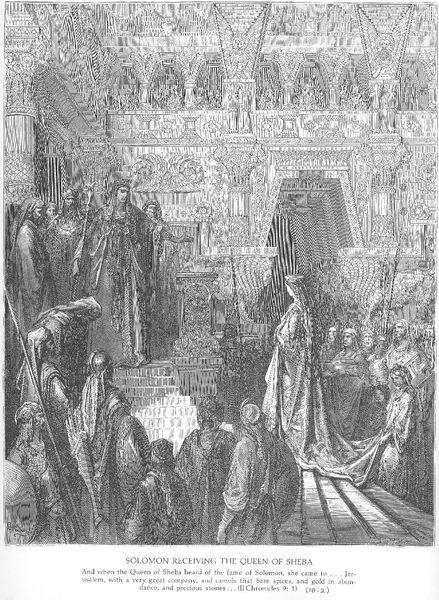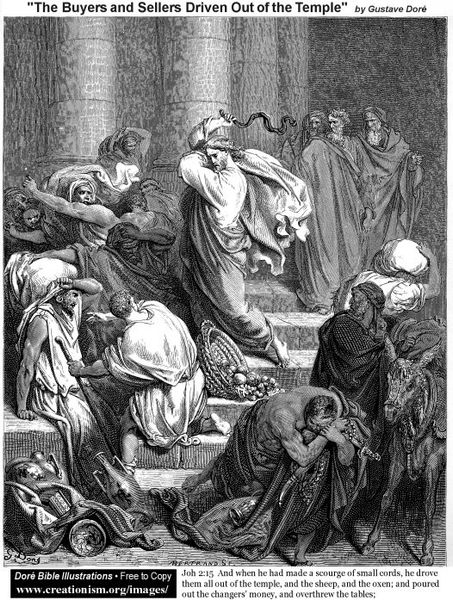
drawing, print, ink, engraving
#
portrait
#
drawing
#
medieval
#
narrative-art
# print
#
pen illustration
#
pencil sketch
#
old engraving style
#
figuration
#
ink
#
group-portraits
#
pen-ink sketch
#
christianity
#
line
#
history-painting
#
academic-art
#
engraving
Copyright: Public domain
Curator: Let’s turn our attention now to “David Mourns the Death of Absalom.” It’s believed to be a work by Gustave Dore, rendered in ink, and belongs to the Academic Art tradition of the 19th century. Editor: The immediate impression is one of overwhelming grief, a truly cavernous feeling of loss conveyed through the depth of blacks and the density of the lines. There is an almost oppressive feel to the architecture pressing down on the figures. Curator: Note the way Dore structures the composition, dividing the space vertically, emphasizing the architectural setting with meticulously drawn pillars and arches that almost seem to trap the figures in their sorrow. Observe how the textures play against each other. Editor: I am struck by how consistently cultures use the image of figures on their knees as the universal language for suffering. Even beyond religious art, the symbolic implications are heavy, with bowed heads and lowered posture serving as immediate markers of subservience to both the ruling power and overwhelming emotions. Curator: It's a powerful example of Academic art's focus on conveying a moral through narrative, isn't it? Every line serves a purpose to highlight texture or to emphasize mood, directing the eye through the scene. This close control results in deep solemnity, and even something that flirts with melancholic awe. Editor: Yes, one sees that contrast played out here. David, at the pinnacle of the stairs, becomes this icon of inconsolable loss while the men below him are caught between deference to his status and their grief as witnesses to a family tragedy with political ramifications. Their kneeling isn’t only subservience to royalty but perhaps even submission to this unavoidable tragedy of fate. Curator: Dore masterfully used stark light and shadow not just to define form, but to heighten the scene’s dramatic impact and emphasize David’s isolation. He almost floats away with grief, and despite the figures below kneeling for the monarch, they look away and leave him to drown. Editor: Exploring this image through the lens of cultural memory gives us space to reflect on how visual symbols maintain their weight across generations. Despite our diverse backgrounds, that lowered posture, and heavy clothing of lament speaks a common visual language we continue to respond to. Curator: A profound example, wouldn't you say, of the formal interplay between structure and story? Editor: Indeed. One can find within this composition, a window into the ages of human emotions and our struggle to convey grief's profound impact.
Comments
No comments
Be the first to comment and join the conversation on the ultimate creative platform.
